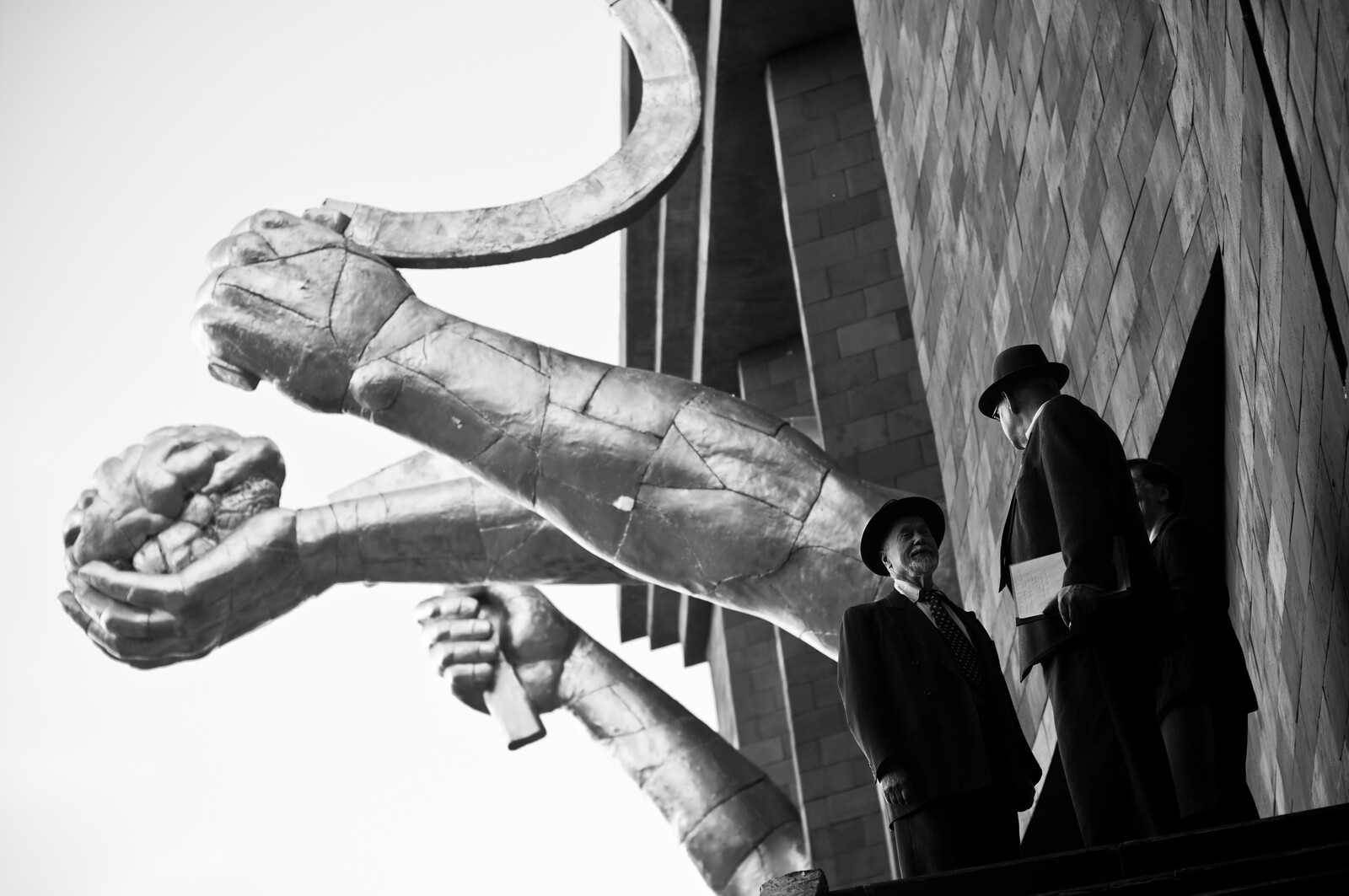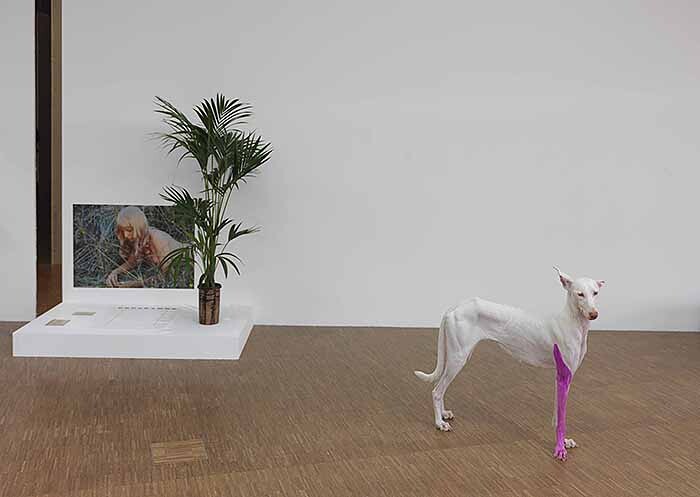Categories
Subjects
Authors
Artists
Venues
Locations
Calendar
Filter
Done
March 12, 2019 – Review
Ilya Khrzhanovsky’s “DAU”
Robert Bird

In 2009, the film director Ilya Khrzhanovsky resolved to expand DAU—a biopic of Soviet physicist Lev Landau, which he had been working on since the release of his feature film 4 (2004)—into a vast multimedia project. With the support of businessman Sergei Adon’ev’s Phenomen Trust, alongside a number of European film production companies, Khrzhanovsky constructed an entire campus in Kharkiv, Ukraine, modeled on a Soviet-era scientific research institute. He recruited dozens of participants to live on-site, for periods upward of two years, immersing themselves in the life of the institute and the material culture of the Soviet Union between the 1940s and ’60s. Blurring the boundaries separating fiction from everyday life, these performers lived their roles before a camera, resulting in over 700 hours of footage, which has now been edited into 13 feature-length films running, in total, more than 30 hours (the films are numbered, without individual titles, and dated 2019). Available evidence suggests that most dialogue and at least some of the action was improvised, thus also blurring the boundaries separating film from other visual and performance media (the closest analogue that springs to mind is Matthew Barney’s “Cremaster Cycle,” 1994–2002). The director’s inconsistent and self-aggrandizing PR …
December 19, 2013 – Review
Pierre Huyghe at Centre Pompidou and Philippe Parreno’s “Anywhere, Anywhere Out of the World” at Palais de Tokyo
Vivian Sky Rehberg

I hate to admit this now, but my eyes rolled involuntarily when I first heard that the Centre Pompidou and the Palais de Tokyo would be holding solo exhibitions of work by Pierre Huyghe and Philippe Parreno, since both artists have already had major shows in Paris museums, but it turns out to be longer ago than I thought (2006 for Huyghe and 2009 for Parreno). At the same time, I also harbored the fantasy that the Musée d’Art Moderne de la Ville de Paris would suddenly wager on a historic trifecta and simultaneously unveil a Dominique Gonzalez-Foerster exhibition, thus providing comparative mid-career overviews of these three established artistic associates, all of whom are at the top of their aesthetic game. As it stands, Huyghe and Parreno’s respective exhibitions generously acknowledge and include a whole host of friends (Gonzalez-Foerster among them), influences, iconic figures, and collaborators, as well as myriad living creatures, in Huyghe’s case, and an abundance of phantoms, in Parreno’s.
If the art world, and the French art world in particular, has a reputation for being intimidatingly cliquish or clannish, a remarkable and surely unintentional achievement of these exhibitions is that they testify to the singular importance of artistic …